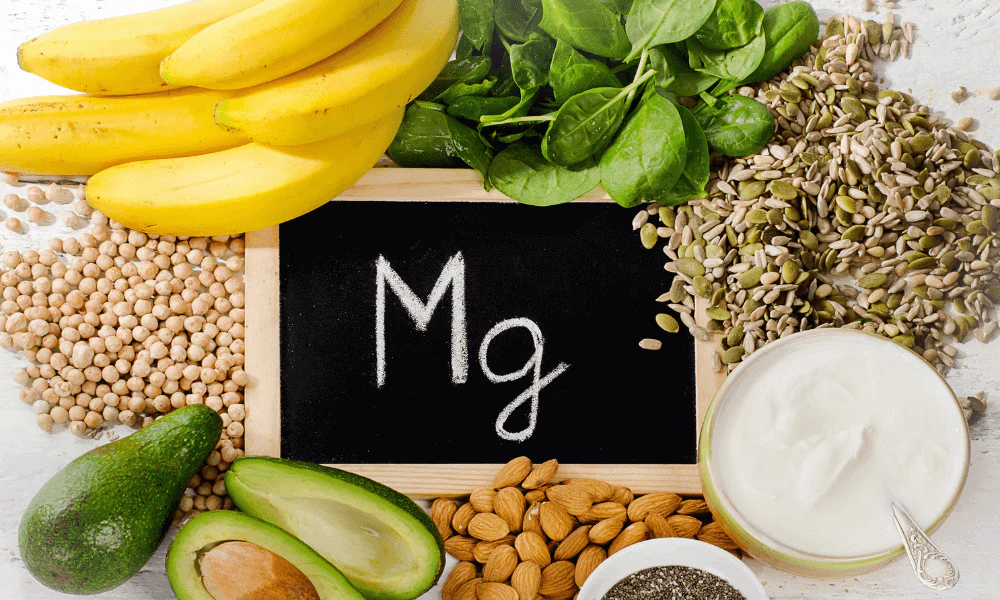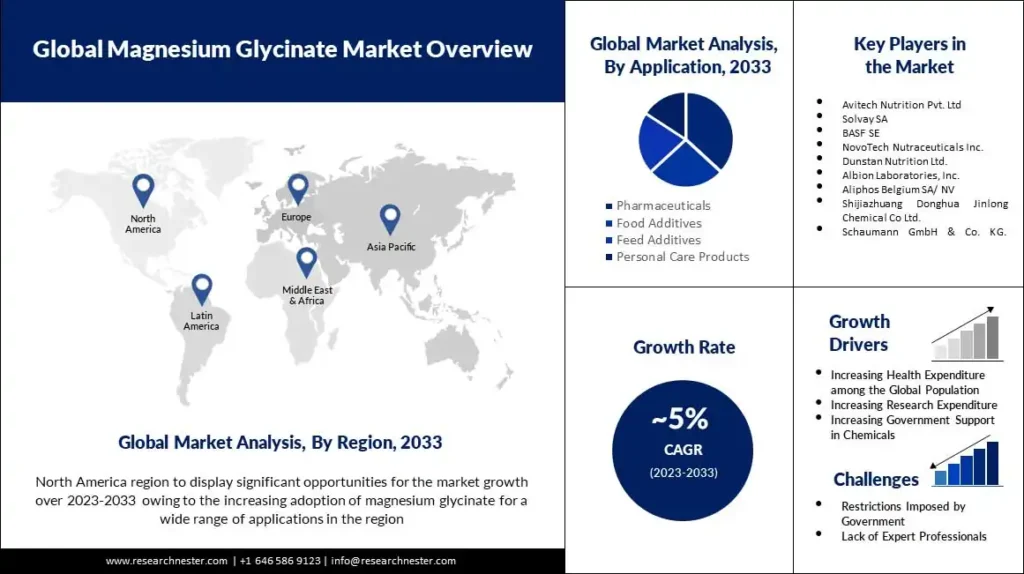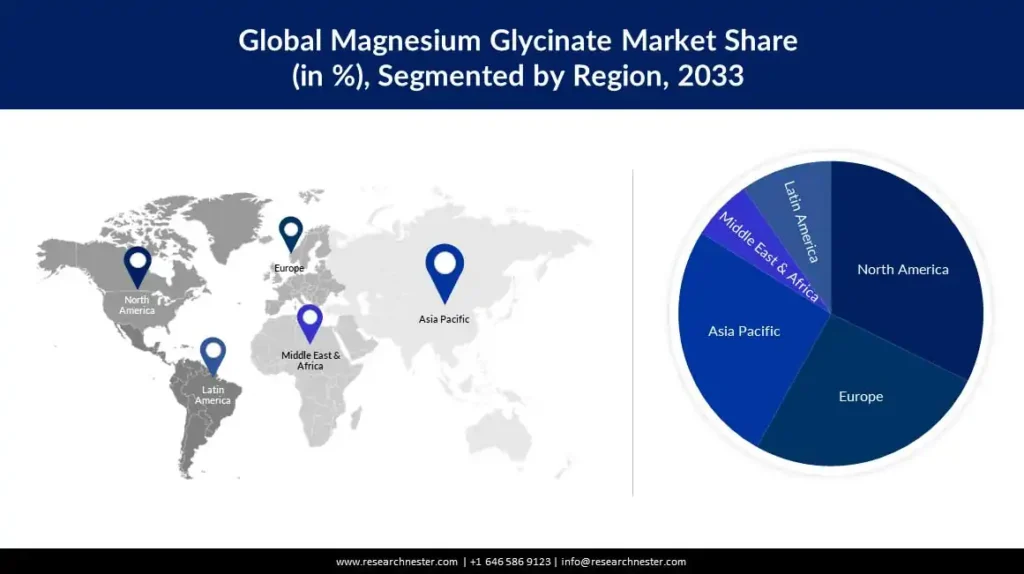Magnesium Glycinate, known as Magnesium Bisglycinate, is a white to off-white solid at room temperature and pressure that is soluble in water and is soluble in dimethyl sulfoxide. Magnesium Bisglycinate is a metallic magnesium salt and a new type of magnesium supplement that helps the body maintain proper magnesium levels. This substance is used in the medical field for the prevention of diabetes and has a calming effect on sleep. It is worth noting that it is a dietary supplement and not a therapeutic drug, so it is not recommended to take it for a long period of time.

Basic introduction
Magnesium Glycinate is a magnesium supplement that can be used to increase the levels of magnesium in people who need more of it, including those who suffer from anxiety, diabetes, heart problems and pain. It consists of the mineral magnesium bound to the amino acid glycine. It is considered one of the most effective magnesium supplements due to its bioavailability and it is also fast-acting and usually well-tolerated, and is unlikely to cause loose stools (diarrhea). Absorption and bioavailability of magnesium supplements vary by type. Typically chelated and dissolved in liquid types are more readily absorbed from the intestines than water-insoluble forms. Magnesium glycinate is a chelated form. This means that it tends to be better utilized by the body than other more easily excreted forms.
Efficacy
Considering that magnesium glycinate is one of the most bioavailable forms of magnesium, this is a smart way to reverse this mineral deficiency. Treating magnesium deficiency is crucial because this mineral is linked to other essential nutrients in the body including calcium, vitamin K, and vitamin D. Magnesium appears to play a key role in regulating sleep. Studies have found that magnesium supplements can help promote muscle relaxation, reduce leg cramps and muscle spasms, reduce tension and anxiety, and combat pain. Taking magnesium glycinate may reduce leg cramps during pregnancy, improve athletic performance and recovery from exercise, improve quality of life, flexibility, and function in patients with chronic pain, and may help control blood sugar in patients with diabetes/insulin resistance, and improve bone health in fracture-prone individuals.
Synthesis of magnesium glycinate
Wang Xiuru et al. proposed a green synthesis of magnesium glycinate in the following steps: take raw material glycine 500g (6.7 mol) add deionized water 1000mL, stirring to raise the temperature to 85 ℃, to be glycine basically dissolved, add the measured magnesium hydroxide 130g (2.2 mol) in 2 times, the reaction for 2h, filtration of insoluble material, to be filtrate down to room temperature, pumping and filtering to get magnesium glycinate Wet product 320g, circulating mother liquor about 1200mL. magnesium glycinate wet product by 105 ℃ vacuum drying 2h, dry weight 290g, of which the magnesium content of 11.5%, magnesium glycinate content of 99.8%, in line with the molecular formula (C2H5NO2)2Mg-2H2O content requirements. (The molar ratio of glycine to magnesium hydroxide was 3.05:1, and the mass-volume ratio of glycine to water was 0.5:1 g/mL).
The method uses cooling crystallization to separate the magnesium glycinate chelate from the synthetic reaction product without using any organic solvent, and compared with the traditional need for alcohol precipitation to obtain the end product, the present invention achieves the purpose of environmental protection and energy saving, and the end product has no alcohol residue, and is more in line with the requirements of food grade.
Ma Yunfeng et al. proposed a method of synthesizing magnesium glycinate, the specific steps are as follows: take 0.75kg of glycine, put it into the laboratory small vertical ball mill, adjust the speed to 1200 rpm, add 0.2kg of magnesium hydroxide, use water to cool the temperature to keep between 20°C and 60°C, after 30 minutes of reaction, then add 0.10kg of magnesium hydroxide, and continue to stir for 65 minutes, and again add 0.033kg of magnesium hydroxide. Add 0.033kg of magnesium hydroxide, stirring for 40 minutes to the end, with 95% ethanol washing and filtration, drying to get 0.844kg of magnesium glycinate (yield 98.%).
The main advantages of this method are: (1) the production process is simple; (2) the reaction process does not need to be heated, saving energy; (3) does not produce waste gas, waste water, waste residue: (4) less investment in equipment, high yield, occupying a small plant.
Global Magnesium Glycinate Market Definition
Magnesium glycinate is a chelate produced from magnesium and the amino acid glycine. Magnesium glycinate is more bioavailable as compared to magnesium citrate and magnesium oxide. Magnesium glycinate is widely used in pharmaceutical, food and personal care industries. Magnesium Glycinate is used as a supplement to prevent magnesium deficiency in people. In addition, other applications of magnesium glycinate include its use in conditions such as migraines, heartburn, indigestion, diabetes, and muscle cramps.
Magnesium glycinate is available in two forms, including a dry form and a liquid form. The dry form of magnesium glycinate is a powder that can be mixed with water, and the liquid form can be consumed directly. Liquid magnesium glycinate has a higher absorption capacity than the dry form. It is also used as an ingredient in the food industry. It enhances the nutritional value of foods and acts as an acidity regulator. The addition of magnesium glycinate to food products acts as a preservative, thereby preventing spoilage and thus extending their shelf life.
Other applications of magnesium glycinate include its use in animal feed. It is incorporated in animal feed to provide a source of magnesium and to improve the amino acids of the animal. This is expected to contribute to muscle growth and enhance muscle strength. It also has anti-inflammatory properties that are beneficial in reducing gastrointestinal problems in animals. In addition, the addition of magnesium glycinate to anti-aging formulations for cosmetics can improve their efficacy. Magnesium Glycinate has moisturizing properties and can treat dry and itchy skin.
Global Market Size, Forecast and Trends Highlights 2024-2036
The magnesium glycinate market size was USD 1.29 billion in 2023 and is expected to exceed USD 2.43 billion by the end of 2036, growing at a CAGR of more than 5% during the forecast period i.e. 2024-2036. The magnesium glycinate industry size is estimated to be USD 1.35 billion in 2024. The growth of the market can be attributed to the expansion of the global chemical industry. For instance, the Indian chemical industry was valued at nearly USD 170 billion in 2019 and is expected to reach around USD 300 billion by 2025. The market is expanding due to the increasing use of chemicals in many industries such as food processing, automotive, pharmaceuticals, and othersFor instance, the construction industry, pharmaceutical industry utilizes a wide range of chemicals including magnesium glycinate to manufacture drugs and medicines. Moreover, the growing textile industry is also having a huge impact on the increasing use of chemicals, which in turn is affecting the growth of the magnesium glycinate market.

Glycine salts are widely used in manufacturing processes in the food and beverages, animal feed, and healthcare sectors. These are by-products obtained from the salts or esters of glycine and amino acids. Growing awareness about health, nutritional deficiencies, and environmental issues is expected to positively impact the growth of the global market. Growing preference and adoption of plant-derived products has led manufacturers to prepare glycine-rich products to fulfill the demand associated with mineral deficiencies. Moreover, the increase in global industrial production is expected to drive the growth of the global magnesium glycinate market during the forecast period. For instance, China’s industrial production is growing at a rate of nearly 4% from July 2020 to July 2022 as compared to the previous year.
Global Magnesium Glycinate Market Segmentation
The global magnesium glycinate market is segmented and analyzed in terms of demand and supply by application in pharmaceuticals, food additives, feed additives, and personal care products. Among these segments, the pharmaceuticals segment is expected to maintain the highest growth by the end of 2036. The growth of this segment can be attributed to the presence of a large pool of patients requiring medication. Moreover, increase in per capita healthcare expenditure is also expected to contribute to the growth of this market. According to the World Bank, the current health expenditure accounted for 9.83% of the global GDP in 2019. Growing concern for health has increased early diagnosis of diseases or health conditions. Magnesium glycinate is used as a magnesium supplement for patients suffering from magnesium deficiency. Magnesium also helps in the prevention of other health conditions such as metabolic syndrome, diabetes, hyperlipidemia, asthma, pre-eclampsia and migraine. Increasing prevalence of these diseases globally has increased the demand for magnesium supplements, thereby contributing to the market growth.
The global magnesium glycinate market is also segmented by type into dry and liquid forms for demand and supply analysis. Among these segments, the liquid form is expected to hold the largest market share. Liquids are preferred over dry powders as they are easily observed in the body. Moreover, many patients are in a weakened state and are unable to take any medication in solid or dry form. Moreover, liquids are considered to be soft and easily accepted by the patient’s stomach. Increasing adoption of supplements by people today is expected to drive the market. These supplements are used to provide nutritional balance and promote a healthy lifestyle. Moreover, increase in consumption of spicy and outdoor food is leading to problems of stomach ulcers, heartburn and acid indigestion. Magnesium is used to alleviate these symptoms.
Regional Overview of the Global Magnesium Glycinate Market

The North America magnesium glycinate market is expected to hold the largest market share among all other regions by the end of 2033. The growth of the market is mainly attributed to the increasing use of magnesium glycinate in various applications such as as a treatment for non-communicable diseases, diabetes, osteoporosis, and as an antidepressant in the pharmaceutical industry; magnesium glycinate as an amino acid resource is essential for the manufacture of personal care products, and increasing use of magnesium glycinate as a food additive in packaged food products has been observed in the region. In 2018, it was observed that 51.8% (129 million) of non-institutionalized adults in the United States had at least one of ten chronic or non-communicable diseases. Pregnant women can take magnesium to prevent magnesium deficiency. Increasing proportion of pregnant women in the region due to highest teenage pregnancy rate is expected to drive the market growth. Moreover, it is estimated that more people in the U.S. are magnesium deficient.
